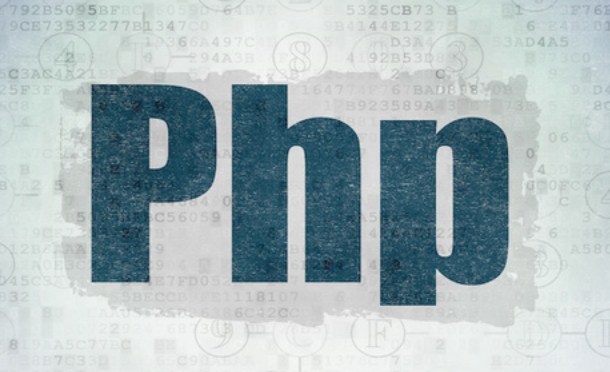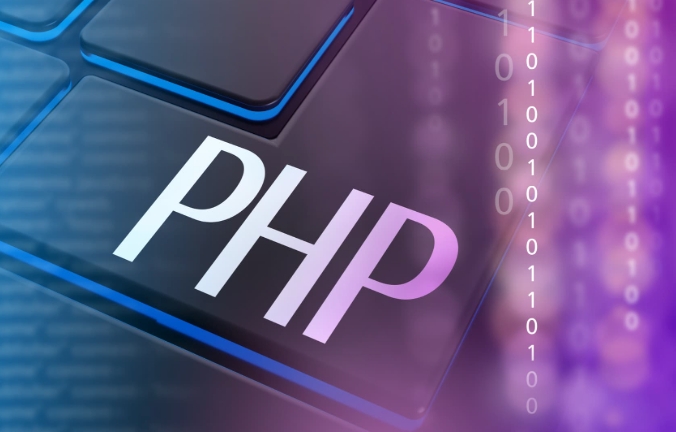When building a PHP environment, the key steps for database integration are as follows: 1. Install MySQL or MariaDB and run a secure initialization script to set the root password, etc.; 2. Use PDO or mysqli to extend the connection to the database. It is recommended to enable pdo_mysql and restart the web server; 3. Write a test script to verify whether the connection is successful; 4. Troubleshoot common problems such as service running status, user permissions, remote access configuration, and PHP error logs. Follow these steps and check the details to ensure the database is successfully integrated into the development environment.

Integration of databases (MySQL or MariaDB) is a key step when building a PHP environment. PHP alone is not enough, most projects need to cooperate with the database to achieve data persistence. The following starts with several common links and talks about how to integrate the database into your development environment smoothly.

Install MySQL or MariaDB
Before you begin, make sure you have installed the database service. MySQL and MariaDB use are almost the same, you can choose according to your preferences. For example, on Ubuntu:

-
Install MySQL:
sudo apt update && sudo apt install mysql-server
Install MariaDB:

sudo apt install mariadb-server
After the installation is completed, remember to run the security initialization script ( mysql_secure_installation or mariadb-secure-installation ), set the root password, delete anonymous users, etc. to avoid security risks.
How to connect to a database in PHP?
PHP To connect to a database, you usually use PDO or mysqli extensions. Both are available, PDO supports more database types, and new projects are recommended to be preferred.
Make sure that your PHP has the corresponding extension enabled. For example, uncomment in php.ini :
extension=pdo_mysql
Then restart your web server (such as Apache or Nginx) to make the configuration take effect.
To test whether the connection is normal, you can write a small script:
<?php
$host = '127.0.0.1';
$db = 'test_db';
$user = 'root';
$pass = 'your_password';
try {
$pdo = new PDO("mysql:host=$host;dbname=$db", $user, $pass);
echo "Connected successfully!";
} catch (PDOException $e) {
echo "Connection failed: " . $e->getMessage();
}If the output "Connection is successful", it means that the connection between the database and PHP is fine.
Frequently Asked Questions
Sometimes it seems all right, but it just can't connect. Check the following suggestions:
- Is the database service running?
- You can use
systemctl status mysqlorsystemctl status mariadbto view the status.
- You can use
- Are the user permissions correct?
- Set access using
GRANT ALL PRIVILEGES ON test_db.* TO 'username'@'localhost';
- Set access using
- Are remote connections allowed?
- If you are developing locally, you generally don't have to worry about this; but if you are a remote server, you need to modify the
bind-addressconfiguration and open the firewall port.
- If you are developing locally, you generally don't have to worry about this; but if you are a remote server, you need to modify the
- Is there any error in the PHP error log?
- Check the
error_reportingandlog_errorssettings inphp.ini. Opening the log can help you locate problems faster.
- Check the
Basically that's it. Although database integration is not complicated, it is easy to get stuck due to problems with permissions, configuration or service status. As long as you check it step by step, it can basically be solved.
The above is the detailed content of PHP environment setup: database (MySQL/MariaDB) integration. For more information, please follow other related articles on the PHP Chinese website!

Hot AI Tools

Undress AI Tool
Undress images for free

Undresser.AI Undress
AI-powered app for creating realistic nude photos

AI Clothes Remover
Online AI tool for removing clothes from photos.

Clothoff.io
AI clothes remover

Video Face Swap
Swap faces in any video effortlessly with our completely free AI face swap tool!

Hot Article

Hot Tools

Notepad++7.3.1
Easy-to-use and free code editor

SublimeText3 Chinese version
Chinese version, very easy to use

Zend Studio 13.0.1
Powerful PHP integrated development environment

Dreamweaver CS6
Visual web development tools

SublimeText3 Mac version
God-level code editing software (SublimeText3)

Hot Topics
 How do I implement authentication and authorization in PHP?
Jun 20, 2025 am 01:03 AM
How do I implement authentication and authorization in PHP?
Jun 20, 2025 am 01:03 AM
TosecurelyhandleauthenticationandauthorizationinPHP,followthesesteps:1.Alwayshashpasswordswithpassword_hash()andverifyusingpassword_verify(),usepreparedstatementstopreventSQLinjection,andstoreuserdatain$_SESSIONafterlogin.2.Implementrole-basedaccessc
 How can you handle file uploads securely in PHP?
Jun 19, 2025 am 01:05 AM
How can you handle file uploads securely in PHP?
Jun 19, 2025 am 01:05 AM
To safely handle file uploads in PHP, the core is to verify file types, rename files, and restrict permissions. 1. Use finfo_file() to check the real MIME type, and only specific types such as image/jpeg are allowed; 2. Use uniqid() to generate random file names and store them in non-Web root directory; 3. Limit file size through php.ini and HTML forms, and set directory permissions to 0755; 4. Use ClamAV to scan malware to enhance security. These steps effectively prevent security vulnerabilities and ensure that the file upload process is safe and reliable.
 What are the differences between == (loose comparison) and === (strict comparison) in PHP?
Jun 19, 2025 am 01:07 AM
What are the differences between == (loose comparison) and === (strict comparison) in PHP?
Jun 19, 2025 am 01:07 AM
In PHP, the main difference between == and == is the strictness of type checking. ==Type conversion will be performed before comparison, for example, 5=="5" returns true, and ===Request that the value and type are the same before true will be returned, for example, 5==="5" returns false. In usage scenarios, === is more secure and should be used first, and == is only used when type conversion is required.
 How do I perform arithmetic operations in PHP ( , -, *, /, %)?
Jun 19, 2025 pm 05:13 PM
How do I perform arithmetic operations in PHP ( , -, *, /, %)?
Jun 19, 2025 pm 05:13 PM
The methods of using basic mathematical operations in PHP are as follows: 1. Addition signs support integers and floating-point numbers, and can also be used for variables. String numbers will be automatically converted but not recommended to dependencies; 2. Subtraction signs use - signs, variables are the same, and type conversion is also applicable; 3. Multiplication signs use * signs, which are suitable for numbers and similar strings; 4. Division uses / signs, which need to avoid dividing by zero, and note that the result may be floating-point numbers; 5. Taking the modulus signs can be used to judge odd and even numbers, and when processing negative numbers, the remainder signs are consistent with the dividend. The key to using these operators correctly is to ensure that the data types are clear and the boundary situation is handled well.
 How can you interact with NoSQL databases (e.g., MongoDB, Redis) from PHP?
Jun 19, 2025 am 01:07 AM
How can you interact with NoSQL databases (e.g., MongoDB, Redis) from PHP?
Jun 19, 2025 am 01:07 AM
Yes, PHP can interact with NoSQL databases like MongoDB and Redis through specific extensions or libraries. First, use the MongoDBPHP driver (installed through PECL or Composer) to create client instances and operate databases and collections, supporting insertion, query, aggregation and other operations; second, use the Predis library or phpredis extension to connect to Redis, perform key-value settings and acquisitions, and recommend phpredis for high-performance scenarios, while Predis is convenient for rapid deployment; both are suitable for production environments and are well-documented.
 How do I stay up-to-date with the latest PHP developments and best practices?
Jun 23, 2025 am 12:56 AM
How do I stay up-to-date with the latest PHP developments and best practices?
Jun 23, 2025 am 12:56 AM
TostaycurrentwithPHPdevelopmentsandbestpractices,followkeynewssourceslikePHP.netandPHPWeekly,engagewithcommunitiesonforumsandconferences,keeptoolingupdatedandgraduallyadoptnewfeatures,andreadorcontributetoopensourceprojects.First,followreliablesource
 What is PHP, and why is it used for web development?
Jun 23, 2025 am 12:55 AM
What is PHP, and why is it used for web development?
Jun 23, 2025 am 12:55 AM
PHPbecamepopularforwebdevelopmentduetoitseaseoflearning,seamlessintegrationwithHTML,widespreadhostingsupport,andalargeecosystemincludingframeworkslikeLaravelandCMSplatformslikeWordPress.Itexcelsinhandlingformsubmissions,managingusersessions,interacti
 How to set PHP time zone?
Jun 25, 2025 am 01:00 AM
How to set PHP time zone?
Jun 25, 2025 am 01:00 AM
TosettherighttimezoneinPHP,usedate_default_timezone_set()functionatthestartofyourscriptwithavalididentifiersuchas'America/New_York'.1.Usedate_default_timezone_set()beforeanydate/timefunctions.2.Alternatively,configurethephp.inifilebysettingdate.timez







